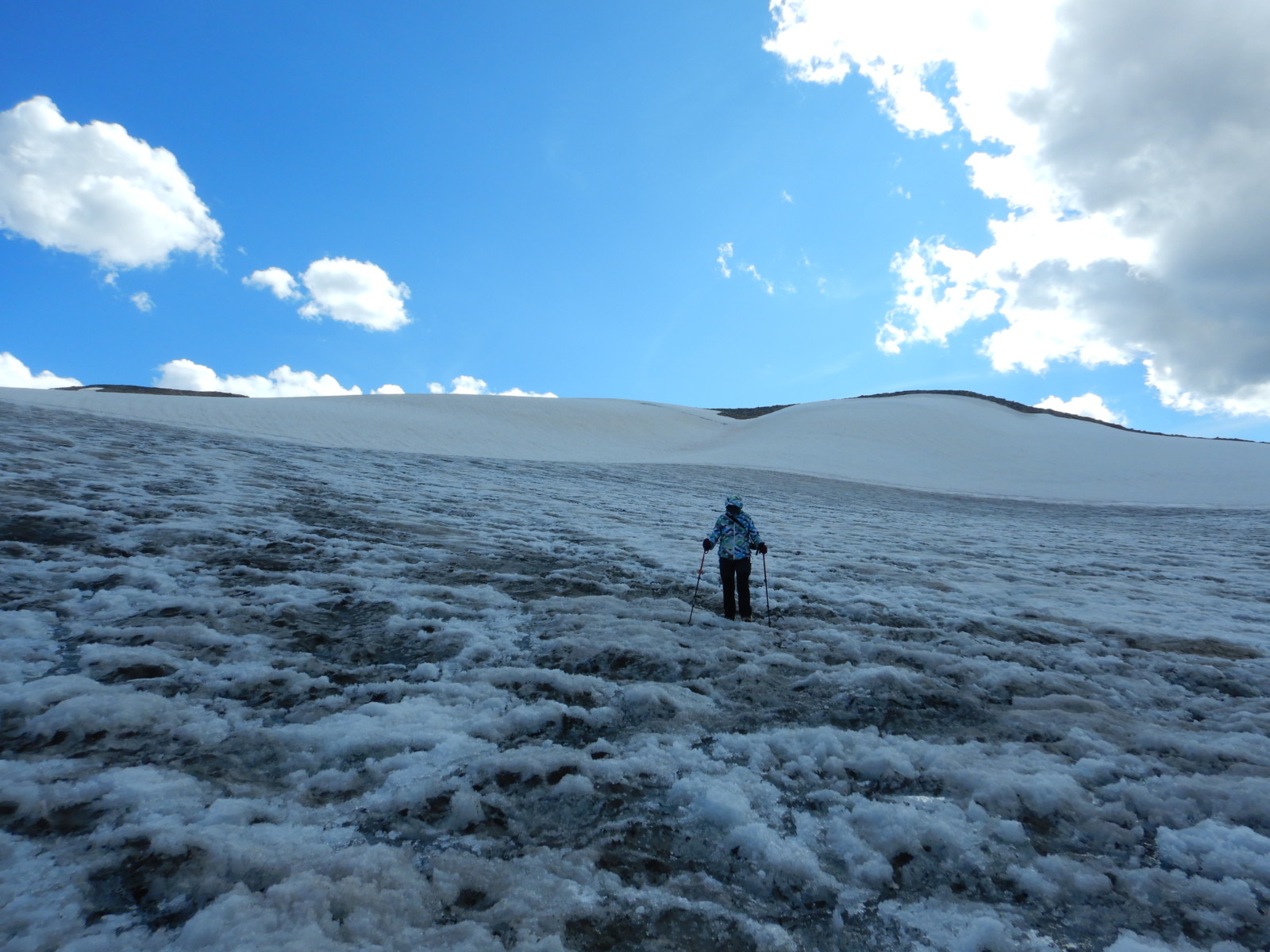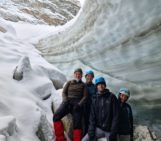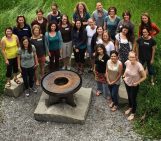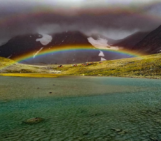 The ruins of a hidden majestic city as Machupicchu in Peru immediately call for our attention. However, there are far more beautiful attractions found hidden amongst the landscape, such as the glaciers, high mountains or the cultural heritage in the area. In South America, glacial bodies are geographically restricted to the Andes, the mountain range that runs across the continent from the tropics to Patagonia. In countries such as Colombia, Ecuador and Peru, these icy giants are only found at altitudes of more than 4500 metres above sea level, where they supply the continent with water through rivers, becoming aquatic giants along the way, such as the great Amazon River.
The ruins of a hidden majestic city as Machupicchu in Peru immediately call for our attention. However, there are far more beautiful attractions found hidden amongst the landscape, such as the glaciers, high mountains or the cultural heritage in the area. In South America, glacial bodies are geographically restricted to the Andes, the mountain range that runs across the continent from the tropics to Patagonia. In countries such as Colombia, Ecuador and Peru, these icy giants are only found at altitudes of more than 4500 metres above sea level, where they supply the continent with water through rivers, becoming aquatic giants along the way, such as the great Amazon River.
Studying glaciers and high mountains ecosystems are therefore of significant importance for understanding the supply of fresh water to towns and villages, but it is by no means an easy task! Similar to known expeditions to the Himalayas, Antarctica, the North Pole or the Alps, the teams have often lacked local women representatives. However, in the Incachiriasca, located on the Salkantay snow-capped mountain and part of the Machupicchu protected area, Gysela and Anaí are two women who are part of the team who work to monitoring the region, despite resistance from within the communities.
Women on the Incachiriasca glacier
Gysela is a geological engineer with a master’s degree in ecology and environmental management. She has worked in different Natural Protected Areas in Peru such as the National Sanctuary of Huayllay or rock forest and the Junín national reserve. For five years, Gysela worked as a GIS specialist in the Machupicchu Historic Sanctuary where part of her tasks included monitoring the Incachiriasca glacier, located on the Salkantay snow-capped mountain.
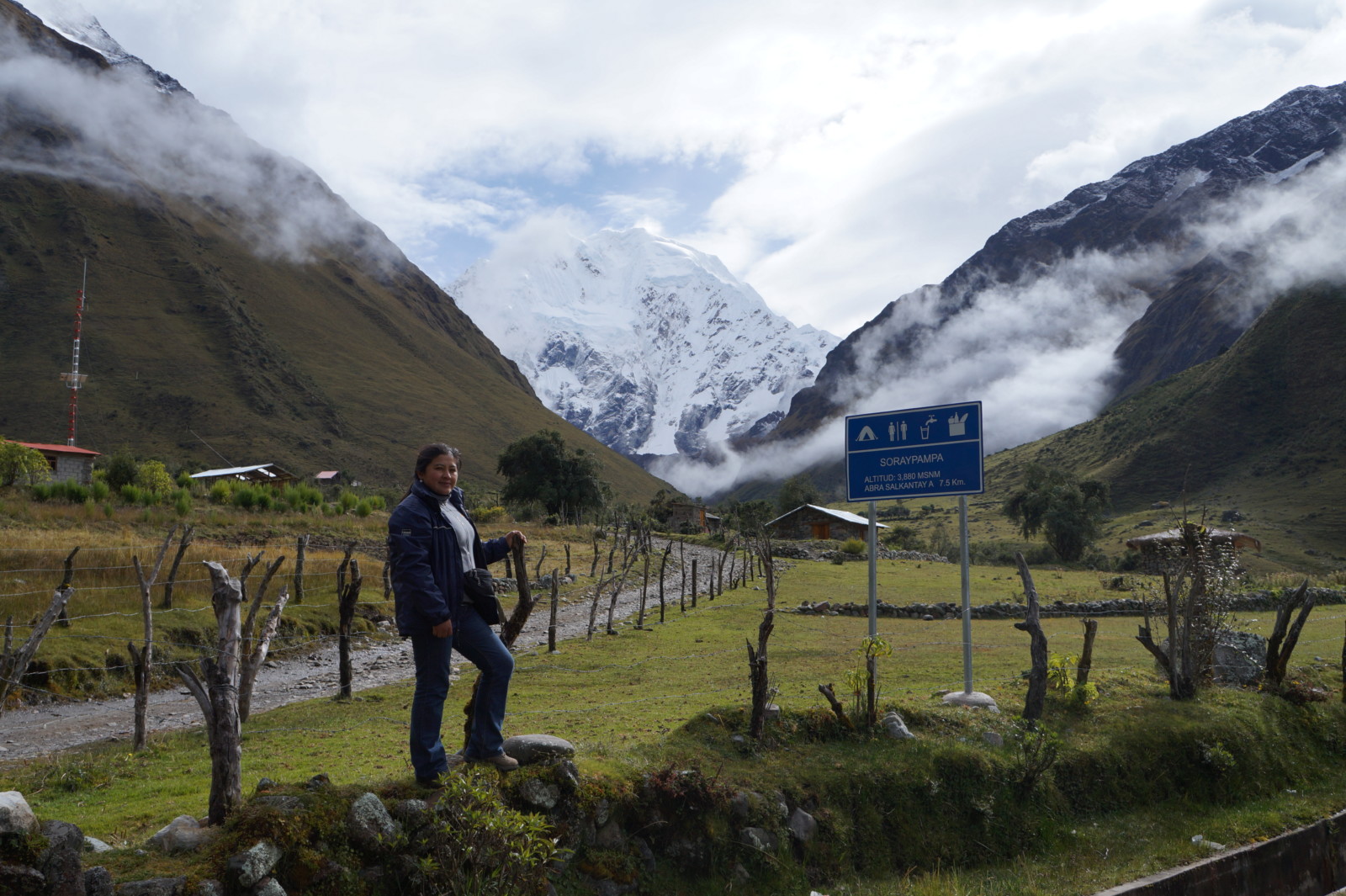
Gysela at Soraypampa, starting point of the trek to the Incachiriasca glacier in 2014 [Credit: Anaí Caparó Bellido]
Gysela tells us what is involved in an expedition to the Incachiriasca glacier, and how they monitor it once they are there.
“Since 2007, monitoring the glaciers has become part of the prevention and impact reduction of the Machupicchu protected area. Motivated by the increase of torrential events, landslides and rock and ice falls, the team carries out the monitoring work to calculate the melting, area, mass and the equilibrium line of the glacier (or 0°C isotherm) and thus make a diagnosis of the state of the glacier.
The Incachiriasca glacier monitoring expeditions are a minimum of four days in the field but months of logistical efforts. The first day is a long journey by van at dawn to the place where the team loads horses and mules with the equipment. The journey continues for five to six hours trekking in a changeable, sometimes inclement climate, to the edge of the glacier, where finally the team arrives to set up their base camp. In the following days, the work starts early in the morning with the data collection of the equipment, searching for the beacons installed in the previous expedition, as well as taking samples and cores necessary to calculate the mass balance (net accumulation and ablation). Finally, after these arduous days of work, the team returns and evaluates the retreat of the glacier.”
The first year that Gysela accompanied the expedition, her teammates were quite sceptical about her physical fitness, as well as fearful of the possible effects of having a woman as part of their expedition. The Peruvian territory is inhabited by the descendants of the Inca empire, and here the connection with Pachamama or Mother Earth, as well as with the Apus, the mountains, is preserved. Rituals of payment to the Earth are performed in order to tribute and ask permission to access sacred places such as high mountains. When the journey includes a woman, these special rituals become even more essential to please the mountains, as it is said the mountains are jealous females who do not like the presence of other women. This deep-rooted thinking about the mountains selectivity and predilection to welcome only man becomes an excuse to exclude women with phrases such as “the mountain doesn’t want her here” or “the weather is rainy because we are going with a woman”, which become common mutterings on the ascent to the glacier. Without paying much attention to these comments and despite being physically and mentally exhausting, Gysela continued to accompany the expedition for four more years and values everything she learned on the expeditions and training for the glacier monitoring.

Anaí as part of the expedition to monitor the Incachiriasca glacier in 2014 [Credit: Anaí Caparó Bellido]
Gysela and Anaí’s paths crossed in 2014, when after obtaining her degree in Environmental and Development Engineering in Honduras, Anaí returned to the Inca’s Sacred Valley in Cusco. As a child, Anaí enjoyed spending time in the mountains with her siblings and it was no surprise that upon returning she decided to volunteer as a park ranger at Machupicchu. Anaí initially supported the GIS team for 4 months but ended up working for a full year as part of the team and participating in that year’s glacier expedition. For Anaí, Gysela has been a great inspiration. Indeed, during her volunteer year, she was the one sharing her knowledge and supporting her participation in the project. She definitely inspired her to continue her studies.
Today, Anaí lives in North Dakota, where she is in the first year of her PhD in Earth System Science and Policy, focusing on her favourite topic: glaciers of course! This time in a different context, but with the same passion as she had in Peru. Although Gysela and Anaí no longer work together, they look back fondly on their time together and laugh about their trip to Incachiriasca. Gysela works as Head of the Risk Management Office of the Municipality of Pisac, where she hopes that one day comprehensive projects for the management of climate change hazards will be developed.
Edited by Emma Pearce
 Mónica Alejandra Gomez Correa is a Colombian currently studying Paleobiology at FAU- Erlangen-Nuremberg in Germany. Her research focuses on reconstruction biodiversity patterns and environments throughout time to understand the effects of changes in the ecosystems. As part of GeoLatinas, Alejandra leads the GeoLatinas Blog initiative and is part of the enrollment team. She tweets at @Mokasaurus.
Mónica Alejandra Gomez Correa is a Colombian currently studying Paleobiology at FAU- Erlangen-Nuremberg in Germany. Her research focuses on reconstruction biodiversity patterns and environments throughout time to understand the effects of changes in the ecosystems. As part of GeoLatinas, Alejandra leads the GeoLatinas Blog initiative and is part of the enrollment team. She tweets at @Mokasaurus.
GeoLatinas is an inclusive, member-driven organization with more than 400 members in about 40 countries. Our mission is to embrace, empower, and inspire Latinas to pursue and thrive in careers in Earth and Planetary Sciences. We are always welcoming new members into our community, come on and join us!
The GeoLatinas Blog is a platform created to promote and amplify the voice of underrepresented voices. Thanks to the amazing voluntary work of our authors, editors and specially translators our content is publish in Spanish, Portuguese, and English. Find us on Twitter #GeoLatinasBlog or visit us at https://geolatinas.weebly.com/blog

